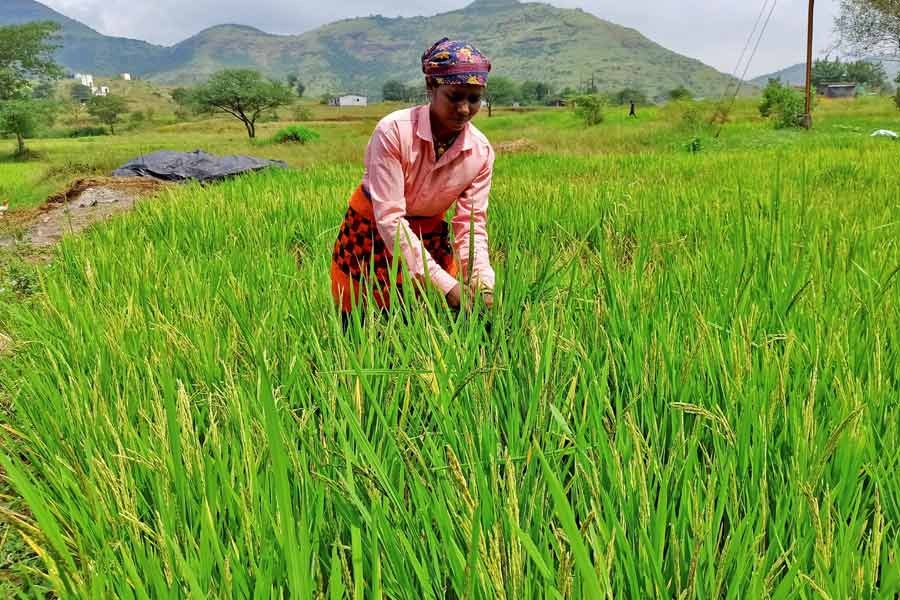India's recent curbs on rice exports could trigger a rally in global prices after more than a decade of stability, traders said, as New Delhi's protectionist move coincides with falling output in other major producers and rising global demand.
Uneven monsoon rains hit rice planting in India, prompting the export restrictions in September, and floods have cut output in Pakistan even as consumption has grown in top importers such as Bangladesh and the Philippines. That's why forecasters are saying global demand will outstrip production in 2022/23.
This is bad for Asian and African countries that use rice as a staple, some of which import as much as 60 per cent of their supply, according to Reuters.
Since India - the world's biggest rice exporter - banned exports of broken rice and slapped a 20 per cent export tax on some non-basmati varieties, global rice prices have jumped more than 10 per cent. Last month, the Food and Agriculture Organization's global rice price index rose 2.2 per cent to hit an 18-month high.
"The international market has gone up and it will go up further," said Nitin Gupta, vice president for Olam India's rice business.
Governments worldwide had already been struggling to tame food inflation because of COVID-19 disruptions to production and supply chains, and then Russia's invasion of Ukraine removed millions of tonnes of foodstuffs from global markets, pushing inflation to a record earlier this year.
Still, before India implemented its export curbs a few months ago, industry and government officials in Asia were saying rice prices would hold steady due to ample stocks.
Rice, unlike wheat, was insulated from the Russia-Ukraine war as neither country is a big producer, and supplies of the grain had remained relatively steady during the COVID-related disruptions for other foodstuffs.
Now, however, top exporters Thailand and Vietnam sit on insufficient inventories to make up for India's curb on exports and widespread output losses. Global rice inventories could fall to their lowest in at least five years in 2023, three global traders said, citing internal assessments.
"Since India cornered 40 per cent of the global trade, it's not easy for others to replace falling Indian shipments when demand is rising from leading importers," Gupta said.
OUTPUT FORECASTS LOWERED
The US Agriculture Department (USDA) has cut its global rice production estimate for 2022/23 to 508 million tonnes, the lowest in four years. Just a month ago, the agency was expecting output for the year at 512 million tonnes.
Some top global trading houses, though, expect a sharper fall to around 500 million tonnes because of the extreme weather conditions that threaten crop yields in countries such as China, India, Bangladesh and Pakistan.
In India, dry weather conditions delayed the sowing of rice, with many farmers not planting the crop at all, and then torrential rains damaged ripening paddy fields, raising concerns about food inflation.
India's summer-sown rice output is likely to fall to 105 million tonnes in 2022/23, down 6 per cent, the farm ministry said in September, and private traders estimate it could fall as low as 100 million tonnes.
Rice output in China, biggest consumer of the grain, could drop 2.9 per cent from a year ago to 206 million tonnes due to higher temperatures and drought in some rice-growing regions, according Shanghai JC Intelligence Co Ltd, a consultancy.
This is a big change from last year, when India's record 21.2 million tonnes of rice exports - 30 per cent cheaper than rival suppliers - helped cap global prices while other food commodities soared due to supply disruptions.
After the September curb, India's rice exports are set to fall by around a quarter this year.
FALLING DOWN IN ASIA
Almost all top producers are beset with lower rice output, and global demand will likely outstrip supply, said BV Krishna Rao, president of India's Rice Exporters Association.
India's export restrictions have helped rival suppliers Vietnam, Thailand and Myanmar increase their sales, but they have limited surplus stocks for exports, Rao said.
Vietnam's unmilled rice output is forecast to hold flat to last year's 43 million tonnes, according to government data.
Neighbouring Thailand is aiming to export 7.5 million tonnes this year, up about 7 per cent from its previous target of 7 million tonnes, said Anucha Burapachaisri, a government spokesman.
Together the two can add no more than an extra 2 million tonnes of rice to fill the void left by India, traders said.
Meanwhile, Pakistan cannot capitalise on India's export curbs after severe flooding ravaged its crop. Its rice output could fall 18 per cent to 7.4 million tonnes, according to the USDA.
Other Asian producers such as China, Bangladesh and the Philippines were, like India, hit by unfavourable weather conditions, including drought, flooding, typhoons and cyclones.
"The exceptional confluence of events in Asia will badly hit consumers in many parts of the world and many poor consumers will have to either buy far more expensive, superior grades or go without rice," said Himanshu Agarwal, executive director at Satyam Balajee, India's biggest rice exporter.
"The choice will be difficult."


